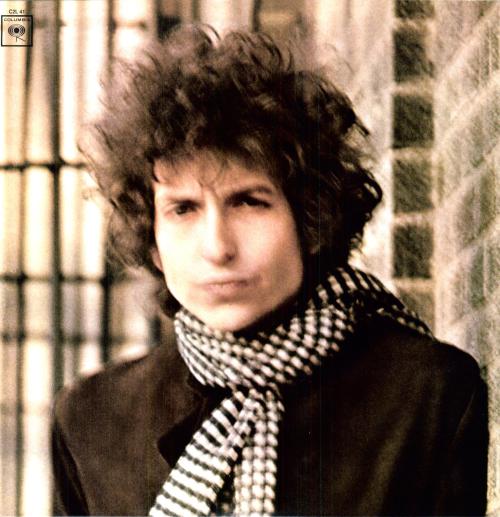
Bob Dylan was used to recording at Columbia Records’ Studio A in New York, so it was natural that when he began recording the album that would become Blonde On Blonde, he would return to the studio where he’d worked previously.
This time he went in with his touring band, The Hawks. But the onstage fireworks mostly didn’t translate into studio recordings that satisfied Dylan.
Six sessions were held in New York, but they were frustrating for Dylan. He wasn’t getting the sound he wanted, and only one song from all those sessions, “One Of Us Must Know (Sooner Or Later),” would end up on the album.
Dylan’s producer, Bob Johnston, had suggested a change of scene during the Highway 61 Revisited sessions: Columbia Music Row Studios in Nashville. Now Dylan decided to take Johnston’s advice.
On February 14, 1966, Dylan showed up in Nashville for sessions that would produce the bulk of the recordings that would be used on Blonde On Blonde, which I think is Dylan’s true masterpiece.
Sean Wilentz wrote in a 2007 issue of the Oxford American about the making of Blonde On Blonde:
Nashville had been ascending as a major recording center since the 1940s. By 1963, it boasted 1,100 musicians and fifteen recording studios. After Steve Sholes’s and Chet Atkins’s pioneering work in the 1950s with Elvis Presley, Nashville also proved it could produce superb rock & roll as well as country & western, r&b, and Brenda Lee pop. That held especially true for the session crew Johnston assembled for Dylan’s Nashville dates. Trying to plug songs for Presley’s movies, Johnston had hooked up for demo recordings with younger players, many of whom, like McCoy, had moved to Nashville from other parts of the South. Charlie McCoy and the Escorts, in fact, were reputed to be Nashville’s tightest and busiest weekend rock band in the mid-1960s; the members included the guitarist Wayne Moss and the drummer Kenneth Buttrey who, along with McCoy, would be vital to Blonde on Blonde.
Johnston’s choices (also including Jerry Kennedy, Hargus “Pig” Robbins, Henry Strzelecki, and the great Joseph Souter, Jr.—aka Joe South, who would hit it big nationally in three years with “Games People Play”) were certainly among Nashville’s top session men. Some of them had worked with stars ranging from Patsy Cline, Elvis Presley, and Roy Orbison to Ann-Margret. But apart from the A-list regular McCoy (whose harmonica skills were in special demand), they were still up-and-coming members of the Nashville elite, roughly Dylan’s age. (Robbins, at twenty-eight, was a relative old-timer; McCoy, at twenty-four, was only two months older than Dylan; Buttrey was just turning twenty-one.) Although too professional to be starstruck, McCoy says, they knew Dylan, if at all, as the songwriter from “Blowin’ in the Wind” or simply as a guy from New York, an interloper. But they were much more in touch with what Dylan was up to on Blonde on Blonde than is allowed by the stereotype of long-haired New York hipsters colliding with well-scrubbed Nashville good ol’ boys. One of Dylan’s biographers reports that Robbie Robertson found the Nashville musicians “standoffish.” But the outgoing Al Kooper, who had more recording experience, recalls the scene differently: “Those guys welcomed us in, respected us, and played better than any other studio guys I had ever played with previously.”
Read the rest of Wilentz’s article here.
Three songs were recorded on February 14, 1966 that made it onto the album: “Fourth Time Around,” “Visions of Johanna” and “Leopard-Skin Pill-Box Hat”.
The next day, February 15, 1966. Dylan cut a keeper version of “Sad Eyed Lady of the Lowlands.”
The February 1966 sessions concluded on the 16th when Dylan recorded a useable take of “Stuck Inside of Mobile With the Memphis Blues Again.”
He would return in March 1966 to finish recording the album.
Below are the takes that were used on the album, some alternate takes and some live versions.
“Fourth Time Around,” Blonde On Blonde version:
“Fourth Time Around,” live at the Manchester Free Trade Hall May 17, 1966:
“Fourth Time Around,” Rolling Thunder Review, Civic Center, Augusta, ME November 26, 1975:
“Fourth Time Around,” Royal Albert Hall, May 27, 1966:
“Fourth Time Around,” live in Australia, 1966:
“Visions of Johanna,” Blonde On Blonde Version:
æVisions of Johanna,æ alternate take November, 30, 1965:
“Leopard-Skin Pill-Box Hat,” Blonde On Blonde version:
“Leopard-Skin Pill-Box Hat” [Alternate Take], January 25, 1966 session:
“Leopard-Skin Pill-Box Hat,” Sydney Stadium, Sydney, AU, April 13th, 1966:
“Sad-Eyed Lady of the Lowlands,” Blonde On Blonde version:
“Stuck Inside of Mobile With the Memphis Blues Again,” Blonde On Blonde version:
“Stuck Inside of Mobile With the Memphis Blues Again,” alternate take, Feb 17, 1966:
-– A Days of the Crazy-Wild blog post: sounds, visuals and/or news –-